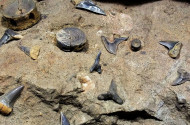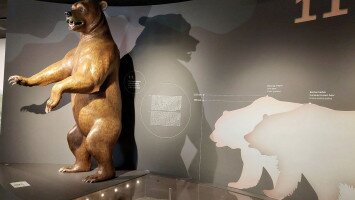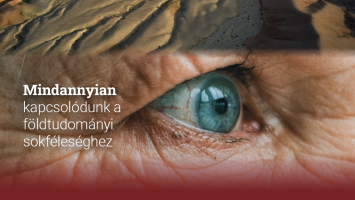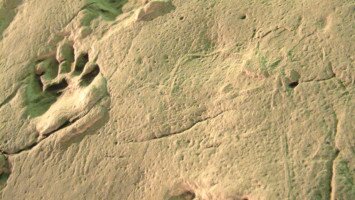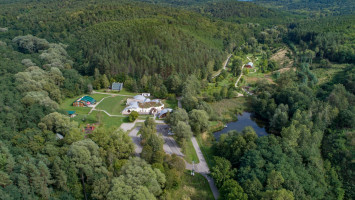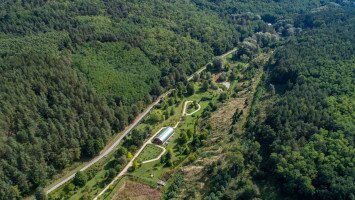
The reworked shoreline sandstone layers of the 23 Ma old sea sediments bear a very rich marine fauna. The so called “shark tooth-bearing beds” also contain a mixture of remains from rays, dolphins, manatees and crocodilians. The marine beds were first reported by Koch (1903, 1904). He described 25 shark species from 8 genera, with 4 new species among them. After his description the “Ipolytarnóc shark tooth-bearing bed” became a characteristic marker of the Eggenburgian stage of the Lower Miocene in the Central Paratethys.
The original fauna was revised recently based on new finds. The result shows a very diverse Lower Miocene shark community, representing warm-temperate water, a subtropical climate with wide habitation range that includes 19 genera with 16 certain species (Kocsis, 2007, 2016).
The fossil shark teeth captured the mind of local people, folklore created a myth about them by calling the shark tooth as a petrified bird-tongue.
It is less known that the marly layers of the glauconitic sandstone have fragments of solitary coral and mollusk remains. Bioerosional feeding traces refer to the presence of sea urchins as well.
